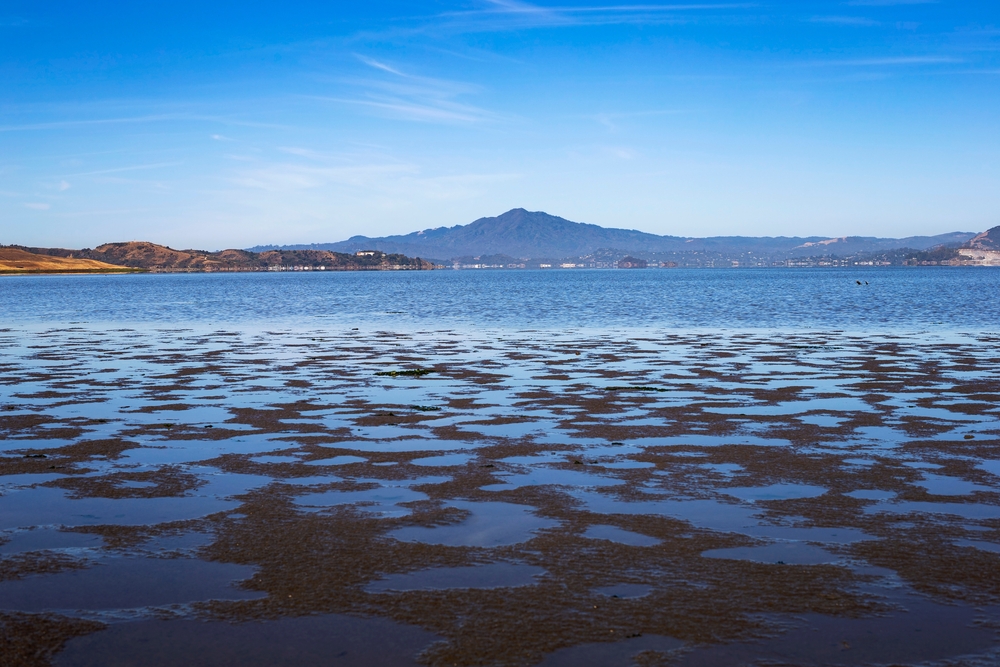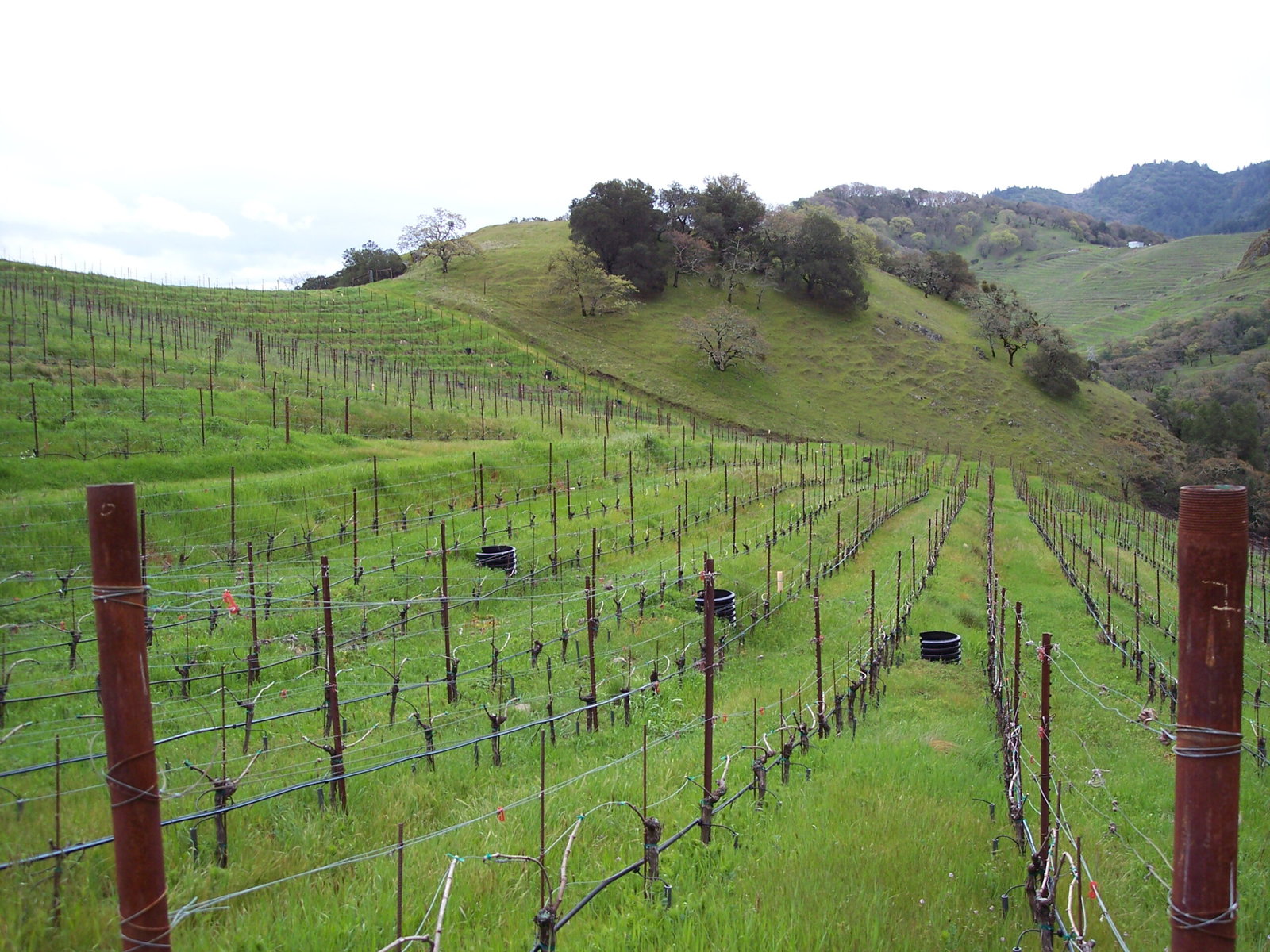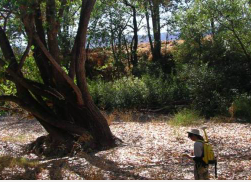

Waterline is an ongoing series of stories exploring the intersection of water, climate and food, told through the eyes of the people impacted by these issues. It is funded by a grant from the Walton Family Foundation.
Among even the most casual eaters, invoking Napa Valley will almost assuredly lead to talk about wine. Blessed with a Mediterranean climate, Napa Valley’s grapes benefit from dry summer days, rainy winters and nighttime fog — ideal conditions for the cultivation of late-ripening cabernet sauvignon grapes, which represent over 50 percent of the total varietals planted in Napa.
Far less likely to come up in discussions of Napa travels: native, endangered species of salmon and trout. But what happens along the waterways of wine country has a huge impact on its local fish. Lush, green and temperate, ringed by low-lying mountains and bisected by the San Pablo Bay-bound Napa River, Napa Valley might appear at first blush to be gloriously immune to the more dire effects of climate change. But an alarming decrease in the region’s salmonid populations over the past 75 years suggests otherwise.

As it turns out, the dirty side to grape-growing is, well, dirt. According to literature published by the San Francisco Bay Regional Water Quality Control Board, vineyards are “significant sources of sand and finer sediment discharge.” These sediments then collect in the Napa River and its tributaries, clogging up the waterways and making the return journey for spawning steelhead trout and Chinook salmon a treacherous one.
For 26 years, the appropriately named Fish Friendly Farming (FFF) program has sought to alleviate these impacts of farming and ranching on the local waterways. Administered by the California Land Stewardship Institute (CLSI), the certification program enlists specialty crops farmers — including grape growers — as stakeholders in the push to preserve salmonid populations. The program helps to demystify local environmental regulations and best practices regarding soil and erosion management in order to prevent sediment from entering the myriad waterways where salmonid species might be impacted.
In 1997, Laurel Marcus — a UC Santa Cruz-educated consultant in habitat and watershed restoration — began developing the program with funding from the Sotoyome Resource Conservation District, and a handful of Sonoma County vineyard owners and operators as clients. By 1999, she’d pinned down the basics, including a customizable Farm Conservation Plan template and detailed beneficial management practices (BMPs) learned, she says, “on the go.” The work combined her knowledge of watershed science with what basics she learned about farming while touring the fields. Her goal: to make the certification process a collaborative one. Friendly not just for fish, but for farmers, too.
Since then, the Fish Friendly Farming program has certified over 280,000 acres on more than 2,000 properties in 10 counties, including 100,000 acres in Napa Valley alone. While the CLSI now administers various conservation and habitat restoration projects, Fish Friendly Farming remains its signature program, and Napa Valley a consistent stronghold. As of 2020, an estimated 90 percent of all of Napa’s vineyard land was FFF certified.
For CLSI project manager Connor Bennett, a site visit is a chance to use his knowledge of topography and hydrology in order to help create a farm plan addressing a specific property. Having grown up fifth generation in Napa, with a close cousin who’s worked vineyards in Sonoma County since the 1980s, Bennett at first rejected a path into wine, opting instead to train in environmental science at UC Davis with an eye towards becoming what he laughingly terms “a dirtbag”: “Going around, living out of a tent, working with wildlife and natural areas. Not making very much money. That whole thing,” as he puts it. But after an internship in biodiversity fieldwork at Trinchero Family Estates — a 75-year-old wine business with a portfolio of some of the region’s largest brands, including Sutter Home — Bennett rediscovered his innate passion for wine and its makers.
When conducting a site visit, he’ll sit down with an individual grower or property manager with CLSI-generated aerial and topographical maps and determine the terrain. Where are its peaks and valleys? Slopes and drainage? Creeks and wells? Afterwards he’ll explore the physical property and create what he calls a “sediment inventory.”
Crushed by negative news?
Sign up for the Reasons to be Cheerful newsletter.“It’s a catalog of the sources of erosion,” Bennett explains. After the initial site visit, the CLSI follows up with site-specific recommendations to put in the farm plan. As the overarching purpose of the farm plan is to prevent sediment from contaminating the waterways, the majority of the recommendations focus on soil and erosion management techniques. Many are fast fixes and easy to implement. These might include a maintenance cover crop of clover and fescue that helps to hold soil in place in the fields. Or planting a “filter strip” of native grasses as a buffer between the vineyards and the riverbanks to catch any runoff from the fields before it reaches the waterways.
Some recommendations are more labor-intensive. Replacing culverts, regrading roads, revegetation of riverbanks, and large-scale restoration projects such as creek setbacks might take several years to complete, and may result in a loss of vineyard land. But as long as farmers continue to work on implementing their individualized farm plans, while their progress and compliance are tracked via photo-monitoring and self-assessment, they remain certified — at least until their recertification inspection, which happens every five years.
Stag’s Leap Wine Cellars, known industry-wide as the establishment that won the infamous 1976 “Judgment of Paris” with its cabernet sauvignon, completed its FFF certification journey around 2010. For Kirk Grace, director of vineyard operations, the decision to do so was an easy one. He’d previously encountered the program while working as the vineyard manager at Robert Sinskey Vineyards, a California certified organic establishment, known for its pinot noirs, and an early adopter of the Fish Friendly Farming certification when it expanded into Napa. Since, as Grace points out, all farms over five acres in Napa are required to have a certified sustainability farm plan in order to operate, it made sense to stick with the program, especially because of its focus on soil health.

“Without that good soil health, I don’t have good healthy crops,” he notes.
Similarly, as the senior viticulturist at Barbour Vineyards, August D’Amato estimates that she’s helped enroll over 20 of the 50 or so vineyards under Barbour’s management with the program. She too had encountered FFF at a previous job, and grew to appreciate the perspective its members bring to their site evaluations.
“You’ve got these trained professionals that might see something that I didn’t think of,” she says.
For all of this focus on soil management and stewardship, what Fish Friendly Farming can’t guarantee is a return of salmonidae to their historic spawning grounds. Sediment is just one of many environmental stressors on their natural habitat, and not all sediment can be traced back to farming. Roads, commercial development, devegetation, and hillside “mass wasting” erosion are also to blame — and there’s no one single conservation program that fully addresses all of these potential sources in a holistic manner.
“It’s very hard to say what the direct impact [of the program] on the fish is,” Marcus admits.
But what the CLSI can definitively point to is a network of connected, conservation-minded clients whose acreage stretches across Northern and Central California. From a scant handful of Sonoma county farms who’d signed on in the late ’90s to their current expansive reach, Fish Friendly Farming is cultivating a vision of shared ecological goals. Spread in many instances by word-of-mouth and growers’ associations that sign on en masse, the program continues to connect more and more of the many individual properties that impact the waterways. In doing so, FFF is developing interconnected and thriving ecosystems that will better replicate the ideal conditions that endangered salmon populations need in order to make a real comeback.
It’s been a slow process, but the awareness that success requires a critical mass of participants has definitely helped generate enthusiasm for making “fish friendly” a regional priority. It’s also a concept with legs: An unrelated organization, Salmon-Safe, operates a similar certification program in the Pacific Northwest and recently expanded into Idaho with Trout-Safe certification.
For Grace, the most positive impact of Fish Friendly Farming may be the one it has on the farming community. He feels a “personal responsibility” toward their shared ecology.
“As an individual, I’m not going to have a significant impact,” he muses. “But as a community, the potential environmental benefits are tremendous.”



